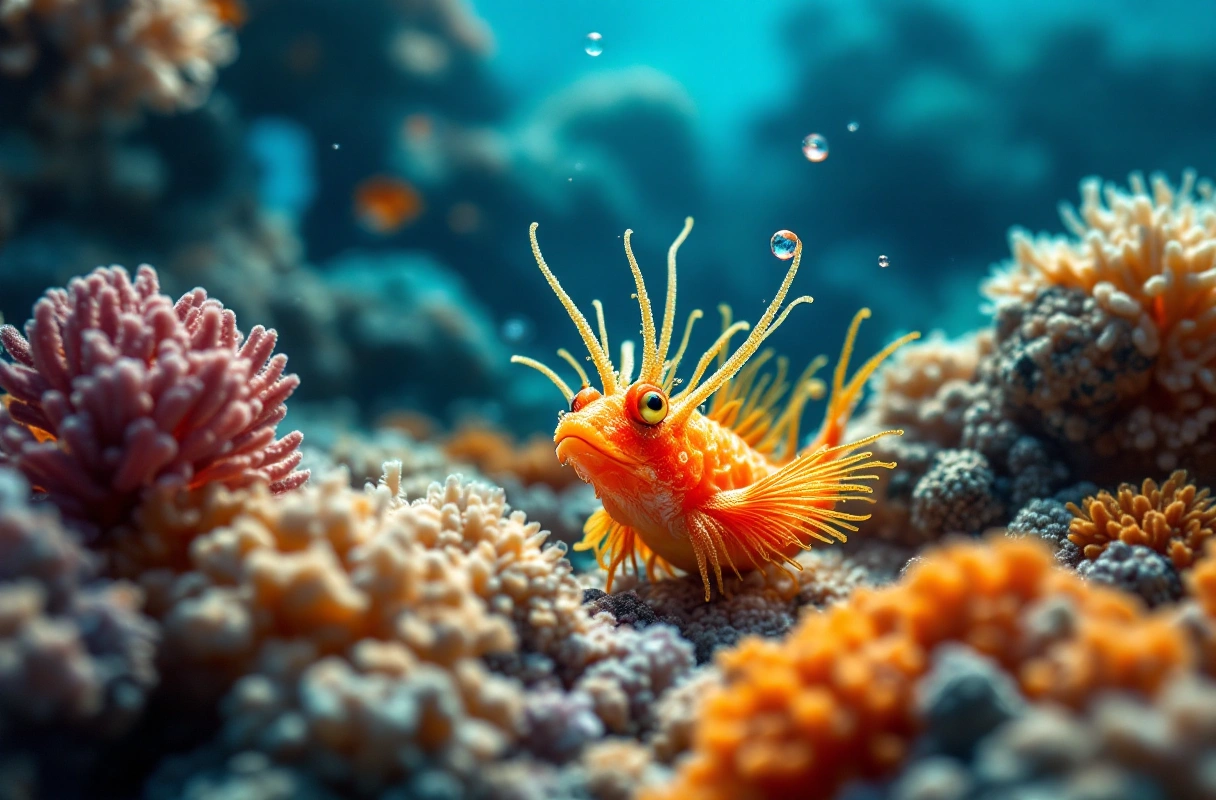
Snorkeling opens up a vibrant world filled with diverse sea creatures, offering enthusiasts a unique opportunity to connect with marine life. Whether you're a beginner or have some experience, understanding how to identify various sea creatures can enhance your snorkeling adventure. This guide aims to equip you with essential knowledge about marine biology, the adaptations of sea creatures, and practical tips for recognizing them in their natural habitat.

Sea creatures encompass a wide range of organisms that inhabit oceans and seas. These include fish, mollusks, crustaceans, and marine mammals, each exhibiting unique characteristics and adaptations. Understanding these creatures is crucial for anyone who wishes to engage with them respectfully and knowledgeably.
Sea creatures are not only fascinating to observe but also play vital roles in the marine ecosystem. For instance, coral reefs provide habitats for numerous species, while larger marine mammals such as whales help maintain ocean health by regulating prey populations. Recognizing the importance of these creatures can foster a greater appreciation for marine environments.
When snorkeling, you may encounter a variety of sea creatures. Here are some common categories:
Understanding these categories will help you identify sea creatures during your snorkeling excursions.

Adaptations are essential for survival in the diverse marine environments where sea creatures thrive. These adaptations can be physiological, behavioral, or structural and are crucial for feeding, reproduction, and protection.
Many sea creatures have developed specific physiological traits that allow them to survive in their environments. For example:
These adaptations not only enhance survival but also demonstrate the incredible evolutionary processes that shape marine life.
Behavioral adaptations are equally important. Many sea creatures exhibit behaviors that increase their chances of survival. For instance:
Understanding these behaviors can help you anticipate the presence of certain sea creatures while snorkeling.
Structural adaptations refer to the physical features of sea creatures that enhance their ability to survive. Key examples include:
Recognizing these structural traits can aid in identifying sea creatures while snorkeling.

As you embark on your snorkeling adventures, consider the following tips to enhance your ability to identify sea creatures.
Preparation is key to successful snorkeling. Here are some steps to follow:
By educating yourself about the local marine life, you increase your chances of recognizing and appreciating the creatures you encounter.
Paying attention to the behavior of sea creatures can provide valuable clues for identification. For instance, fish that dart quickly may be hunting, while those that hover near the sea floor might be foraging. Additionally, noting whether a creature is solitary or part of a group can help narrow down its identity.
Documenting your snorkeling experiences can aid in learning and identification. Consider:
This practice not only enhances your understanding of marine biology but also allows you to share your experiences with others.
While it's exciting to observe sea creatures, it's vital to respect their habitats. Here are some guidelines:
By following these principles, you contribute to the preservation of marine environments while enjoying your snorkeling experience.
Understanding common misconceptions about sea creatures can enhance your snorkeling experience and promote respect for marine life. Here are a few key misunderstandings:
Many people believe that all jellyfish are harmful. While some species possess stinging cells that can cause painful reactions, others are harmless. For instance, the moon jellyfish has mild stings, and some species are even edible. It’s essential to research local jellyfish species to understand which ones to avoid and which are safe.
Coral reefs are often mistaken for mere rocks, but they are living ecosystems composed of tiny coral polyps. These organisms build intricate structures that provide habitats for countless sea creatures. Understanding the significance of coral reefs fosters appreciation for their preservation.
Contrary to popular belief, many fish have excellent night vision. Species such as anglerfish have adapted to low-light conditions, using bioluminescence to attract prey. This adaptation highlights the diversity of marine life and the fascinating ways creatures have evolved.
As you explore the underwater world while snorkeling, you're not just enjoying a recreational activity; you’re engaging with marine biology. Understanding the science behind sea creatures enriches your experience and fosters a deeper connection to the ocean.
Marine biology encompasses the study of marine organisms, their behaviors, interactions, and ecosystems. By learning about marine biology, you gain insights into the delicate balance of ocean life and the importance of conservation efforts.
Conservation plays a crucial role in maintaining healthy marine ecosystems. As snorkelers, we can contribute to conservation efforts by:
By becoming informed and active participants in conservation, we help ensure that future generations can enjoy the beauty of sea creatures and their habitats.
Exploring the world of sea creatures while snorkeling opens doors to endless learning opportunities. As a nature enthusiast or student eager to understand more about marine life, you can deepen your knowledge through organizations like Banana Slug Club. We are dedicated to fostering curiosity about the natural world, offering resources and educational experiences for all ages.
Whether you're looking to learn more about marine biology, engage in conservation efforts, or simply connect with fellow nature lovers, Banana Slug Club provides valuable insights and support. Visit our website to explore our educational materials and join our community of nature enthusiasts.
By understanding sea creatures and their adaptations, you not only enhance your snorkeling experience but also contribute to the conservation of our oceans. Dive into the wonders of marine life, and let your curiosity guide you on this exciting journey.
Get free resources, early access to new features and updates.
No spam. Just fun educational emails!